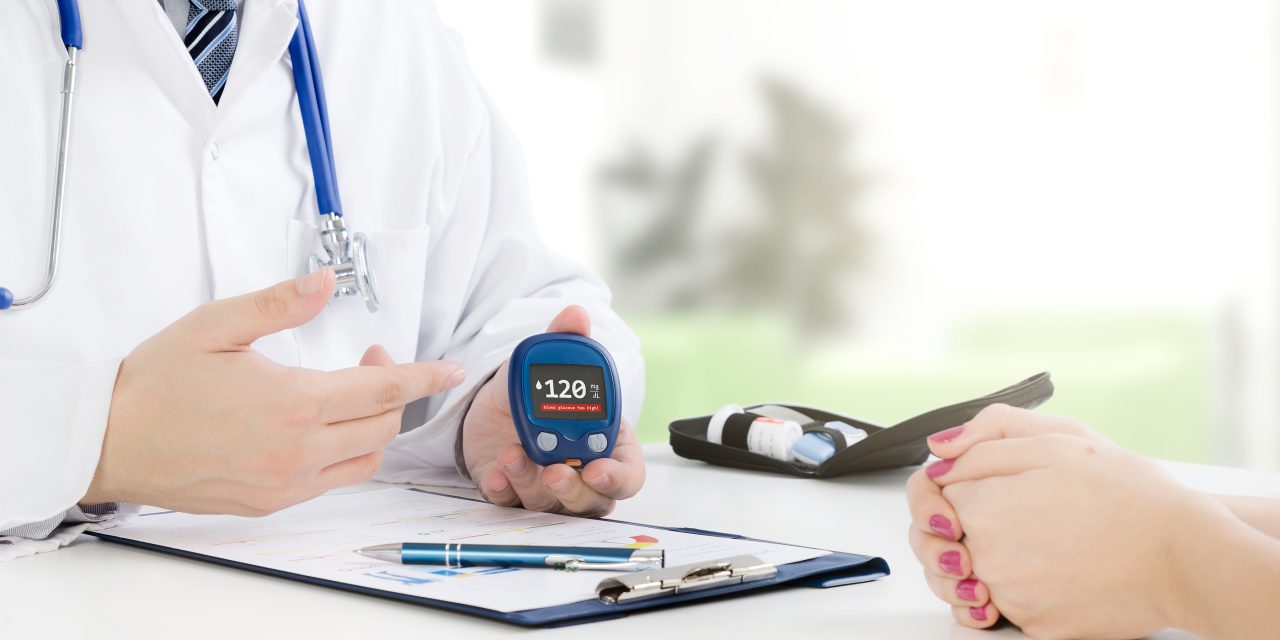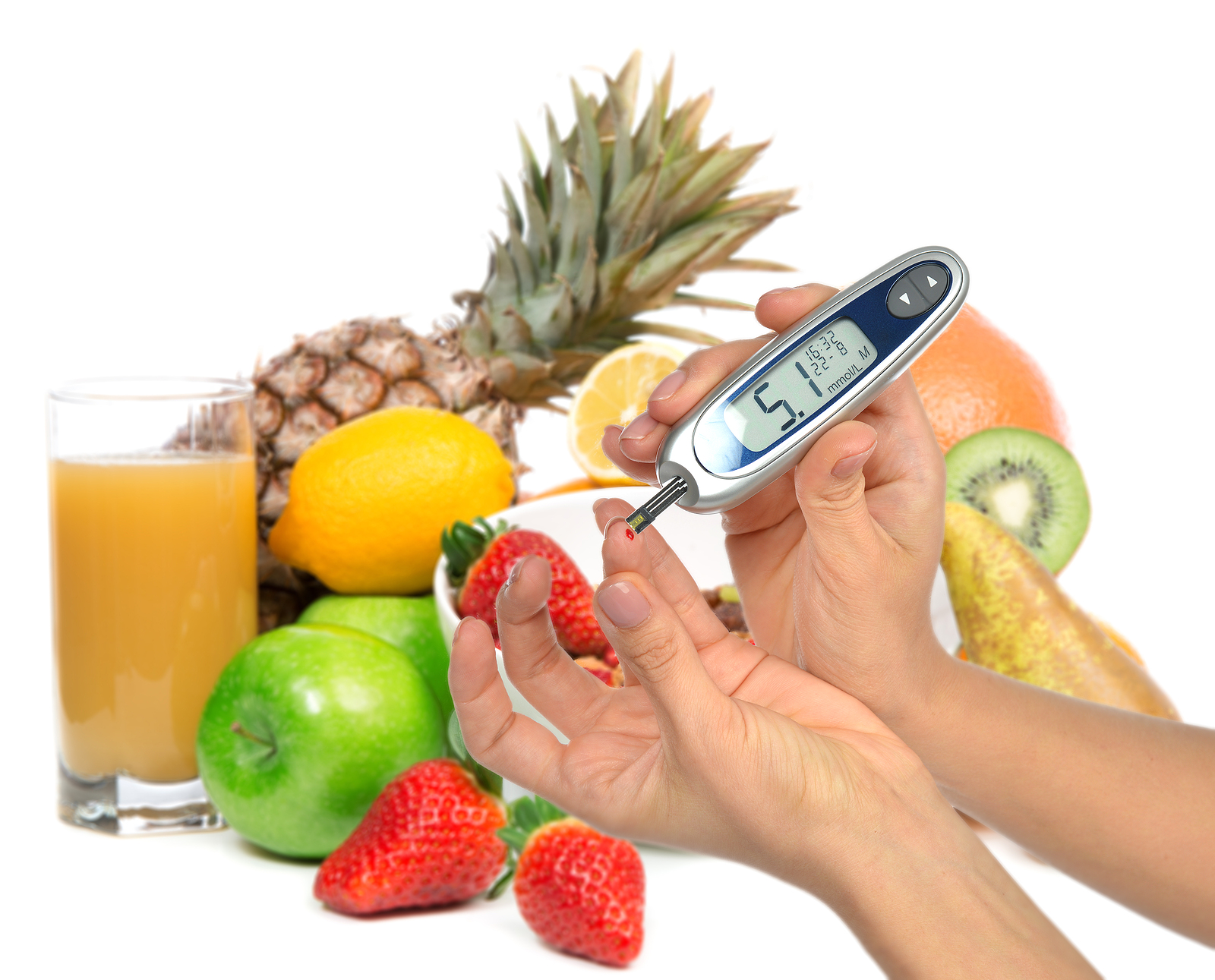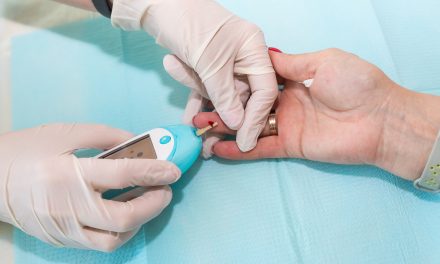Identifying type 2 diabetes early can significantly improve health outcomes.
Type 2 diabetes is diagnosed primarily through blood tests that measure glucose levels. Tests like the fasting blood sugar test and the A1c test are common methods used by healthcare professionals to detect abnormal glucose levels. If the results show higher than normal blood sugar levels, it may indicate diabetes.

The early detection of diabetes symptoms plays a crucial role. These can include increased thirst, frequent urination, and fatigue. By recognizing these signs, individuals can seek medical advice sooner.
Lifestyle, genetics, and various risk factors contribute to the onset of type 2 diabetes, making routine screenings important for those at risk.
Keeping type 2 diabetes under control involves ongoing management. With advances in diabetes care, patients have various treatment options. From medication to lifestyle adjustments such as diet and exercise, managing blood sugar effectively can reduce the risk of complications and improve quality of life.
Key Takeaways
- Blood tests measure glucose levels to diagnose type 2 diabetes.
- Recognizing diabetes symptoms early is crucial for timely intervention.
- Managing blood sugar is key to living well with type 2 diabetes.
Understanding Type 2 Diabetes

Type 2 diabetes is primarily related to insulin resistance and is more prevalent than Type 1. It involves varying factors like obesity and prediabetes.
It’s crucial to differentiate between Type 1 and Type 2 diabetes to understand their distinct characteristics and management strategies.
Defining Type 2 Diabetes
Type 2 diabetes is a chronic condition that affects the way the body uses insulin. While the body still produces insulin, it either does not use it effectively or does not produce enough. This leads to higher blood sugar levels.
Unlike Type 1, where the body produces little or no insulin, Type 2 is often linked to lifestyle factors such as obesity and poor diet. Some individuals may have prediabetes, a condition where blood sugar levels are higher than normal but not yet high enough to be diagnosed as diabetes. Early detection and lifestyle changes can help manage the progression of this disease.
Comparing Type 1 and Type 2
Type 1 and Type 2 diabetes differ in significant ways. Type 1 is an autoimmune condition where the immune system attacks insulin-producing cells in the pancreas. It usually starts in childhood or early adulthood.
In contrast, Type 2 develops over time, primarily due to insulin resistance and often associated with factors such as age, family history, and obesity. People with Type 1 diabetes rely on insulin injections, while those with Type 2 can often manage their condition through lifestyle changes, oral medications, and sometimes insulin. Gestational diabetes, occurring during pregnancy, can increase the risk of developing Type 2 diabetes later.
The Role of Insulin Resistance
Insulin resistance is key in Type 2 diabetes. It happens when cells in muscles, fat, and the liver do not respond well to insulin, causing the pancreas to produce more insulin to help glucose enter cells. Over time, the pancreas cannot keep up, leading to elevated blood sugar levels.
This condition is closely linked to obesity and sedentary behavior. Regular exercise and dietary changes can improve insulin sensitivity and help prevent or manage Type 2 diabetes. Diagnosing insulin resistance early can prompt lifestyle interventions that prevent the development of full-blown diabetes.
Risk Factors and Symptoms

Type 2 diabetes is influenced by certain risk factors and symptoms. Understanding these elements is essential for early recognition and management. Awareness of what increases diabetes risk and knowing the early signs can lead to timely intervention.
Identifying the Risk Factors
One key risk factor is obesity, which often leads to higher blood sugar levels. Excess body fat, especially around the abdomen, affects insulin function.
Individuals with a sedentary lifestyle or those who don’t exercise regularly are also at higher risk.
Prediabetes is another critical factor to monitor. People with this condition have elevated blood sugar levels that are not yet high enough to be classified as diabetes. It indicates a higher likelihood of developing type 2 diabetes.
Family history and genetics also play a role, with a greater risk observed in those with relatives who have diabetes. Certain ethnicities, like African American, Hispanic, and Asian, may have higher occurrences.
Recognizing the Symptoms
Common symptoms of type 2 diabetes include frequent urination, excessive thirst, and high blood sugar levels. These occur because the body struggles to manage glucose effectively.
People might also experience increased hunger, despite eating regularly, as the body tries to gain energy from sugar that doesn’t get utilized.
Other symptoms can be fatigue and blurred vision. These result from the body’s inefficiency in using glucose for energy and possible changes in blood pressure due to high glucose levels. In some cases, there is a slow healing process for wounds or frequent infections, as high blood sugar can impair blood circulation and the immune system.
It’s important for individuals to notice these signs early for timely health management.
Diagnostic Procedures

Diagnosing type 2 diabetes involves several steps and assessments to ensure accurate results. Health care providers use a combination of screening methods, blood tests, and A1C levels to identify and confirm the condition.
The Initial Assessment
The process often begins with an initial assessment conducted by health care providers. During this stage, they evaluate factors such as family history, age, weight, and symptoms.
People at higher risk of type 2 diabetes often undergo further testing. Health care providers may ask patients about lifestyle habits including diet and physical activity.
These initial assessments help determine the likelihood of the disease and whether additional diagnostic procedures are necessary. Knowing these personal factors enables more tailored testing for accurate results.
Blood Sugar Testing Methods
Several blood sugar tests are used to diagnose type 2 diabetes.
The most common is the fasting blood sugar test, which measures the level of glucose in the blood after an overnight fast. A fasting blood sugar level equal to or above 126 mg/dL indicates diabetes.
Another method is the oral glucose tolerance test, which checks how the body processes sugar. During this test, blood sugar levels are measured before and after consuming a sugary drink. Consistent high levels indicate a problem.
Each test holds different values for diagnosis, and health care providers choose based on patient needs and medical history.
Understanding A1C Levels
The A1C test measures the average blood sugar level over the past two to three months by evaluating the percentage of hemoglobin with attached glucose. An A1C level of 6.5% or higher suggests diabetes.
This test helps physicians understand long-term glucose management rather than just short-term spikes. Because of its reliability, A1C is often used to monitor diabetes progression.
Patients with an A1C test result close to the threshold may have it repeated to confirm the diagnosis. This test differs from fasting or glucose tolerance tests as it doesn’t require fasting, making it a convenient and useful tool in diabetes management.
Treatment Options

Managing type 2 diabetes often involves a combination of lifestyle changes and medical treatments. Key aspects include adjustments to daily habits and taking medications to maintain healthy blood sugar levels.
Lifestyle Adjustments
Lifestyle changes are a crucial part of managing diabetes. These include dietary changes, like eating more fruits, vegetables, and whole grains. Reducing sugar and refined carbs can help control blood sugar spikes.
Physical activity is also important. Regular exercise, such as walking or cycling for 30 minutes a day, helps lower blood sugar and boosts insulin sensitivity.
Weight loss may also be recommended, supporting easier blood sugar management.
Working with a healthcare provider to set achievable goals is essential. They can create a personalized plan to suit individual needs, making lifestyle changes easier to stick to over time.
Medications and Insulin Therapy
In many cases, medications are needed to help control blood sugar levels.
Metformin is often the first drug prescribed as it helps to lower glucose production in the liver. Other diabetes medications, such as sulfonylureas or DPP-4 inhibitors, may be used depending on individual needs.
For some, injectable medications or insulin therapy may be required. Insulin can come in various forms, like short-acting or long-acting options, and is used to maintain blood sugar targets when other treatments are not enough.
Choosing the right medication depends on multiple factors, including how well current treatments control blood sugar and any other health concerns.
Monitoring Blood Sugar
Regular monitoring of blood sugar is essential in diabetes care.
Keeping track helps in making necessary adjustments to medications or lifestyle. Tools like a glucose meter or a continuous glucose monitor (CGM) can provide insights into how diet, exercise, and medications affect blood sugar levels.
Continuous glucose monitors offer real-time data about blood sugar trends, which can be especially helpful for those needing closer monitoring. Knowing when and how to check levels can empower individuals to take control of their diabetes management and make informed decisions about their health.
Living with Diabetes
Living with type 2 diabetes involves making informed lifestyle choices and accessing support to manage the condition effectively. This includes focusing on diet, exercise, daily routines, and educational resources that enhance quality of life.
Diet and Exercise
A balanced diet and regular exercise are crucial for managing diabetes.
He or she should focus on a diabetes-friendly diet that includes whole grains, lean proteins, fruits, and vegetables. Portion control and carbohydrate counting are helpful strategies.
Engaging in aerobic exercise like walking or swimming can help maintain healthy blood sugar levels. Experts recommend at least 150 minutes of moderate exercise per week. This routine aids in weight control and improves overall metabolism.
Managing Daily Life
Managing daily life with diabetes type 2 involves monitoring blood sugar levels, adhering to medication schedules, and regular health check-ups.
Using glucose meters helps track blood sugar levels effectively, reducing risks of complications.
He or she must communicate regularly with their health care team, including doctors and dietitians, to adapt treatment plans as needed.
Keeping a daily log of diet, exercise, and blood sugar levels is also beneficial for identifying patterns.
Support Systems and Education
Support systems are vital for those living with diabetes. Family, friends, and community resources play a significant role in providing encouragement and practical assistance.
Diabetes educators can offer tailored guidance and support, assisting him or her to develop strategies for effective diabetes management.
Attending workshops or joining support groups can provide a sense of community and shared learning. Access to reliable information is key, helping him or her make informed decisions about their health and lifestyle choices.
Potential Complications
Individuals with type 2 diabetes face various complications that can affect their health both in the short and long term. These complications may involve vital organs and systems, requiring careful management to reduce risk. It is crucial to monitor health conditions regularly and adopt preventive strategies.
Short-Term Complications
Short-term complications of type 2 diabetes often involve issues with blood sugar levels.
Hypoglycemia occurs when blood sugar drops too low, leading to symptoms like dizziness and confusion. People may also experience hyperglycemia, which happens when blood sugar is too high, causing increased thirst and fatigue. These conditions require immediate attention to prevent more severe health problems.
Skin conditions, such as infections and itchiness, are common short-term issues. Diabetes can make the skin more vulnerable to bacteria and fungi, increasing infection risk. Proper skin care and monitoring can help manage these concerns effectively.
Long-Term Health Issues
Long-term complications of type 2 diabetes can be quite serious.
Cardiovascular disease, including heart disease and stroke, is a major concern, as high blood sugar levels can damage blood vessels over time. Kidney disease may develop due to prolonged strain on the kidneys.
Eye problems, such as retinopathy, are common and can lead to vision loss if untreated. Nerve damage, or neuropathy, can also occur, causing pain or numbness, especially in the feet and hands. Other chronic issues include increased risk of cancer, dementia, and depression.
Regular medical check-ups and lifestyle changes are essential to manage these conditions.
Prevention and Management of Complications
Preventing and managing potential complications involves a multi-faceted approach.
Keeping blood sugar levels within a target range is crucial. Eating a balanced diet, exercising regularly, and adhering to prescribed medications can help achieve this.
Routine check-ups with healthcare providers help monitor and address any emerging issues.
Weight management and quitting smoking can reduce the risk of cardiovascular and other diseases. It is also important to manage stress and get adequate sleep, as these can impact overall health.
Education and awareness of diabetes-related complications empower individuals to take proactive steps in maintaining their health.
Advancements in Diabetes Care
Recent innovations in the care of type 2 diabetes have focused on improving medications and technology.
Medical professionals use advanced tools and treatments to offer better management of the condition.
Innovative Medications
Newer diabetes medications target various pathways to control blood sugar levels.
GLP-1 receptor agonists help enhance insulin secretion and have other benefits like weight loss.
DPP-4 inhibitors work by blocking a specific enzyme, helping the body regulate insulin more effectively.
Traditional drugs like sulfonylureas and thiazolidinediones are still in use but face competition from these newer options.
These drug classes offer flexibility to tailor treatment plans for individual needs.
Emerging Technology
Technological advancements are transforming diabetes care.
Devices like the insulin pump automate insulin delivery, allowing for precise control.
Continuous glucose monitoring (CGM) systems provide real-time data on glucose levels, reducing the need for frequent finger pricks.
These tools improve daily management and can decrease the risk of complications.
Patients benefit from better lifestyle integration, making diabetes management less intrusive and more effective.
Future Directions in Diabetes Treatment
The future holds potential advancements in diabetes treatment.
Research aims at developing new therapies that might delay or reverse disease progression.
Innovations like the artificial pancreas, which combines CGM systems and insulin pumps, are being tested.
Such integrated systems aim to mimic natural bodily processes more closely.
As technology continues to improve, patients and healthcare providers can look forward to even more personalized and effective treatment options.
Preventing Type 2 Diabetes
Preventing type 2 diabetes mainly involves lifestyle changes that focus on a balanced diet and regular physical activity.
Adopting a healthy diet low in refined sugars and high in fiber can help maintain stable blood glucose levels.
Incorporating whole grains, vegetables, and lean proteins is beneficial. Limiting sugary drinks and high-calorie snacks is also recommended.
Regular exercise plays a crucial role.
Engaging in at least 150 minutes of moderate aerobic activity, such as walking or cycling each week, is advised.
Exercise helps in maintaining healthy blood sugar levels and supports weight management.
Weight loss is another key factor. For those who are overweight, shedding even a small amount of body weight can significantly reduce the risk of developing diabetes.
A combination of a healthy diet and exercise can facilitate this process effectively.
Regular screening for those at risk can detect changes in blood glucose levels early.
Individuals with a family history of diabetes or those who have had gestational diabetes should consider regular check-ups.
Early detection can lead to timely interventions, reducing the risk of progression.
Some people might benefit from medications to prevent diabetes onset, especially if lifestyle changes alone are not enough. Consulting a healthcare provider can provide personalized recommendations.
Stress management is also important. High stress levels can affect blood sugar and lead to unhealthy habits.
Practices like meditation, yoga, or hobbies can help reduce stress.
Frequently Asked Questions
Diagnosing type 2 diabetes involves specific tests and criteria. It’s crucial to understand the symptoms that may lead to testing and the role patient history plays in diagnosis.
What tests are used by doctors to diagnose type 2 diabetes?
Doctors use several tests to diagnose type 2 diabetes.
The most common ones are the fasting plasma glucose (FPG) test and the oral glucose tolerance test (OGTT). They measure blood sugar levels and help identify if a person has diabetes.
At what blood sugar level is a diagnosis of type 2 diabetes considered?
A fasting plasma glucose level of 126 mg/dL or higher indicates type 2 diabetes. Additionally, a reading of 200 mg/dL or higher two hours after an oral glucose test supports a diagnosis. Consistent high readings generally confirm the condition.
What symptoms may prompt a doctor to test for type 2 diabetes?
Common symptoms prompting testing include frequent urination, excessive thirst, and unexplained weight loss.
Fatigue and blurry vision can also be signs. These symptoms often lead doctors to suspect diabetes and initiate further testing.
What is the importance of the A1C test in diagnosing type 2 diabetes?
The A1C test measures average blood sugar levels over the past two to three months.
It is important for diagnosing type 2 diabetes as it provides a long-term view of blood sugar control. An A1C level of 6.5% or higher usually indicates diabetes.
Are there different criteria for diagnosing type 2 diabetes compared to type 1?
Yes, there are differences.
While both conditions involve high blood sugar, type 2 diabetes is often diagnosed in adults and related to insulin resistance. Type 1 diabetes typically occurs at a younger age and is due to the body’s inability to produce insulin.
What role does patient history play in the diagnosis of type 2 diabetes?
Patient history is crucial in diagnosing type 2 diabetes. Factors such as family history, lifestyle, and previous medical conditions can influence diagnosis.
Understanding these aspects helps doctors predict risk and tailor patient-specific diagnostic approaches.
















